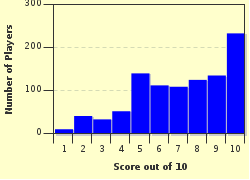Quiz Answer Key and Fun Facts
1. Having a 'quacking' good time on two legs is the duck. Of which family is the duck a member?
2. The gibbon has been 'gibbon' a hard time because he is considered a 'lesser ape' (as opposed to a 'greater' ape). To which family do gibbons belong?
3. Hopping along next is the kangaroo. Which 'large-footed' family does the kangaroo belong to?
4. The anteater that isn't an anteater? One of the few mammals moving with an alternating bipedal gait (walking one foot at a time instead of hopping) are some species of pangolin. To which family does the pangolin belong?
5. Sick 'em Rex! Theropoda is the suborder of biped dinosaurs, such as the tyrannosaurus rex. But to get down to the species T. rex, we need to trace through the superfamily, family, subfamily and genus - all with very similar sounding names. Of these four classifications, which is the family that the Tyrannosaurus rex belongs?
6. Racing along now, the rat is considered a limited, non-locomotive biped with the genus 'Rattus'. To which family does the rat belong?
7. Not quite cute and cuddly, there are only eight living species of bear. To which family do these territorial animals belong?
8. It won't turn you to stone but 'The Jesus Lizard' (because it can 'walk' on water), or the basilisk, belongs to which family?
9. Cockroaches creep me out at the best of times and I really hope these giant critters can't live for too long without their heads. Ugh! To which family do giant cockroaches (such as the death's head cockroach) belong?
10. Although technically 'legless', some types of octopus can move bipedally, whilst their other six limbs act as a camouflage. One of these creatures is the coconut octopus. To which family does the coconut octopus belong?
Source: Author
lones78
This quiz was reviewed by FunTrivia editor
crisw before going online.
Any errors found in FunTrivia content are routinely corrected through our feedback system.


